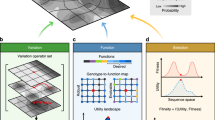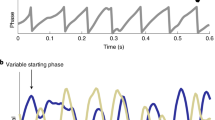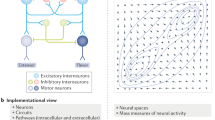Abstract
INTRODUCTORY. TELEOLOGY, a word so familiar to readers of the works of Archdeacon Paley and of Sir Charles Bell, has disappeared from the vocabulary of scientific men. Darwin killed it; he put an end to natural theology and to Bridgewater treatises. Yet all those wonderful contrivances which Paley culled from the animal kingdom remain true; they are facts which have to be explained. The human hand is, as Bell maintained, a most effectively designed structure;2 a modern evolutionist can still study with profit the account he gave of the mechanical contrivances to be seen in every part of the human body.3 Modern discovery has served but to heighten our sense of wonder at the ingenuity which Nature has lavished on the human body. The means she has installed for fighting infection and internal disorders are almost beyond belief. In complexity and in efficiency of design the human brain far excels any invention or organisation the most fertile imagination of man has yet conceived. Engineers, in designing all their contrivances, ensure stability during emergencies by allowing a “factor of safety”; in all systems of the human body the “factor of safety” is more than ample. In this respect the human body has been made almost “fool-proof.”
This is a preview of subscription content, access via your institution
Access options
Subscribe to this journal
Receive 51 print issues and online access
$199.00 per year
only $3.90 per issue
Buy this article
- Purchase on Springer Link
- Instant access to full article PDF
Prices may be subject to local taxes which are calculated during checkout
Similar content being viewed by others
References
The 12th Huxley Memorial Lecture, delivered at Charing Cross Hospital Medical School on June 27.
The Hand, its Mechanism and Vital Endowments as evincing Design. London, 1833.
Illustrations of Paley's “Natural Theology”. An Appendix to Lord Brougham's edition.
Life and Letters, by his son, Leonard Huxley, 1900, vol. 2, p. 268.
Life and Letters, vol. 1, p. 456. I have been unable to obtain any published account of this lecture save that given by Mr. Leonard Huxley in the “Life and Letters".
Life and Letters, vol. 2, p. 188.
Anatomy of Vertebrates, vol. 3, p. 808.
The Origin and Evolution of Life, 1918, p. 278. In this work the reader will find references to literature bearing on predeterminism in evolution.
It is unnecessary to give here a list of the men who have concluded that plants and animals tend to vary in definite directions, whatever be the circumstances in which they are placed. The evidence relating to this matter has been very ably summarised in recent times by E. S. Russell, Form and Function, London, 1916; and by Prof. R. Anthony, “Le Determinisme et l'Adaptation Morphologique,” Archives de Morphologie, Paris, 1922.
British Association Reports, 1912 (Dundee), pp. 575–598.
The Variation of Animals and Plants under Domestication, 1868, vol. 2, p. 222.
"Experiments on the Origin and Differentiation of the Optic Vesicle of Amphibia,” Amer. Jour of Anat., 1904, vol. 3, pp. 507, 805; 1907, vol. 7, pp. 144, 259. See also Spemann, Zoolog. Jahrbuch, 1912, vol. 32, p. 1.
Ebeling and Fischer, Journ. Experim. Med., 1922, vol. 34, p. 317.
See A. H. Drew, British Journ. Experim. Path., 1922, vol. 3, p. 20.
"Further Contributions to Neurobiotaxis,” Psychiat. en Neurolog. Bladen, 1916, Nos. 5, 6.
Journ. of Comp. Neur., 1913, vol. 23, p. 351.
Warren H. Lewis, Keibel and Mall's Manual of Human Embryology, 1910, vol. i. pp. 454–522.
Anat. Record, 1908, vol. 2, p. 145; American Journ. of Anat., 1906 vol. 5, p. 121; Journ. of Experim. Zool., 1907, vol. 4, p. 239.
An account of the actions and reactions of vascular tissues will be found in the writings of W. Roux from 1878 onwards. I have dealt with the adaptative reactions of peritoneal cells in Human Embryology and Morphology, 1921, 4th edition.
I have dealt with the growth reactions of bone cells at some length (Menders of the Maimed, 1919, chapters xiv., xv., xvi., xvii., and xviii.)
"Man's Posture: Its Evolution and Disorders,” Brit. Med. Journ., 1923, I, pp. 451, 493, 545, 587, 642, 669.
Prof. E. H. Starling, “The Chemical Correlation of the Functions of the Body”. The Croonian Lectures at the Royal College of Physicians. Lancet, 1905, vol. 2, p. 339.
Hormones and Heredity, 1921.
Variations in Plants and Animals under Domestication, 1868, vol. 2, p. 34.
Le Déterminisme et l'adaptation morphologique, R. Anthony, 1922, p. 88.
M. F. Guyer and E. A. Smith, Journ. Experim. Zoology, 1921, vol. 31, p. 171.
"An Experimental Study of Racial Degeneration in Animals treated with Alcohol,” Archiv Int. Med., 1912, vol. 10, p. 369; Proc. Soc. Experim. Biol. and Med., N.Y., 1911–12, p. 71; 1913–14, p. 136.
Medical Contributions to the Study of Evolution, 1918, ch. v.
Hormones and Heredity, 1921.
NATURE, 1923, vol. 111, p. 637.
The Nature of Man, translated by Dr. P. Chalmers Mitchell, 1904; see also Keith, “The Functional Nature of the Cæcum and Appendix,” Brit. Med. Journ., 1913, vol. 2, p. 1599.
Collected Essays, vol. 2, p. 5.
"The Problem of Orthognathism,” Proc. Konin. Akad. van Wetensch. te Amsterdam, 1922, vol. 25, Nos. 7, 8; “On the Significance of Supra-orbital Ridges in the Primates,” ibid., 1922, vol. 25, Nos. 1, 2; “On the Character of Morphologcal Modifications in consequence of Affections of the Endocrine Organs,” ibid., 1921, vol. 23, No. 9.
See my Herter Lectures, “The Evolution of Human Races in the light of the Hormone Theory,” Johns Hopkins Hospital Bulletin, 1922, vol. 33, pp. 155, 195; also Prof. C. S. Stockard's “Human Types and Growth Reactions,” Amer. Journ. Anat., 1923, vol. 31, p. 261.
Rights and permissions
About this article
Cite this article
KEITH, A. The Adaptational Machinery concerned in the Evolution of Man's Body. Nature 112, 257–268 (1923). https://doi.org/10.1038/112257a0
Issue Date:
DOI: https://doi.org/10.1038/112257a0
This article is cited by
-
Gross anatomy and evolutionary significance of the human peroneus III
Anatomy and Embryology (1979)
-
The Nature of Man's Structural Imperfections1
Nature (1925)
Comments
By submitting a comment you agree to abide by our Terms and Community Guidelines. If you find something abusive or that does not comply with our terms or guidelines please flag it as inappropriate.



